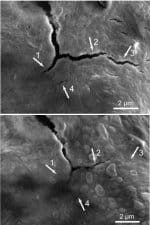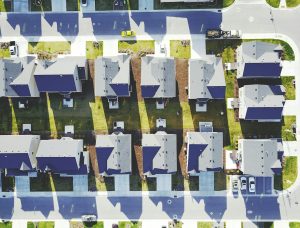Lithium-ion batteries are already far smaller and lighter than their similarly rated lead-acid based counterparts, but a new development by boffins at Stanford could see even better capacity for weight ratio.
The race is on to improve lithium batteries capacity vs. size further; with silicon proving to be one of the most promising electrode materials.
However, cracks occur in silicon electrodes due to the material swelling to three times normal size and shrinking back down again each time a battery is cycled. It’s these cracks that have a marked effect on battery life.
Researchers from Stanford University and the Department of Energy’s (DOE) SLAC National Accelerator Laboratory have developed a battery electrode that heals itself.
Chao Wang, a postdoctoral researcher at Stanford, added nanoparticles of carbon to a polymer being used for other applications so it would conduct electricity and found silicon electrodes treated with the polymer self-repaired any cracks within a few hours.
While extensive research has been carried out to improve electrodes, many developments use expensive materials and production techniques that make scaling up for commercial production challenging.
The self-healing electrode is made from silicon microparticles that are already in wide use and is the first solution that appears to provide a practical road forward according to Yi Cui, an associate professor at SLAC and Stanford who is leading the research.
These early-stage electrodes perform satisfactorily for about 100 charge-discharge cycles and while the researchers acknowledge it is quite some way from commercial viability (3,000 cycles for a vehicle battery); they are confident of success.
Their research was funded by the Department of Energy through SLAC’s Laboratory Directed Research and Development program and by the Precourt Institute for Energy at Stanford University.
Full details of the development are in the Nov. 19 issue of Nature Chemistry.
Source/image source







































